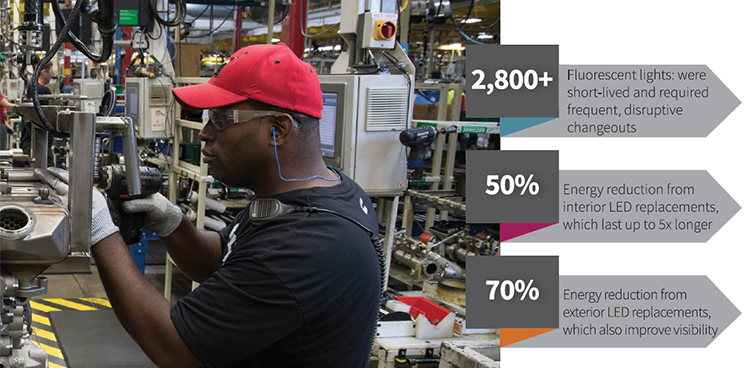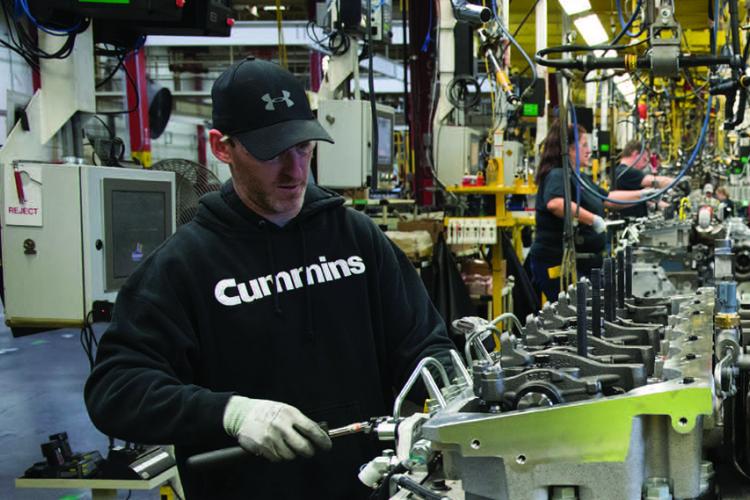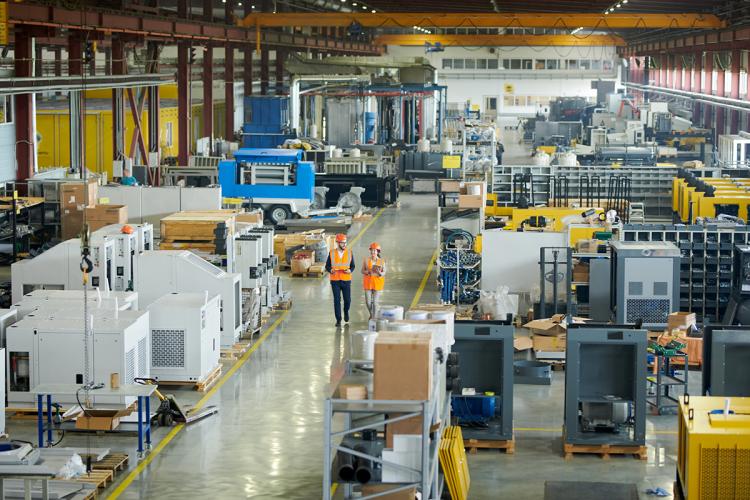Twin Engine: Cummins, Inc. Focuses on Energy Efficiency in a Manufacturing Plant
Twin Engine: Cummins, Inc. Focuses on Energy Efficiency in a Manufacturing Plant
BY SAMANTHA SCHWIRCK
Photo: Courtesy of Jamestown Engine Plant/Current
For Cummins, Inc., a manufacturer of diesel and alternative-fuel engines with 500 distributor sites and 7,500 dealer locations in more than 190 countries and territories, an emphasis on sustainable design isn’t limited to its plants. In fact, energy-efficient lighting extends from the plants all the way to the company's offices. Two recent projects—quite different but united by the Cummins name—offer an example.
JAMESTOWN ENGINE PLANT
With production critical to Cummins’s success, we start with the Jamestown, NY, Engine Plant (JEP). Established in 1974, JEP is the largest heavyduty diesel engine plant in the world, employing 1,600 people and producing more than 450 engines a day. In 2018, the plant shipped its two millionth engine.
Between January 2012 and 2015, Cummins embarked on a phased, wholebuilding energy and infrastructure improvement project at JEP, prompting a lighting and controls retrofit for the 1-million sq ft facility. With LED in mind, Andrew Maze and Dave Willey from JEP’s facilities team evaluated the factory’s existing lighting, the majority of which were 2,800-plus fluorescent fixtures that lasted about 20,000 hours and required frequent change-outs.
The team collected qualitative input from employees and recorded hundreds of footcandle readings throughout the plant in search of a longer-life solution that would reduce employees’ interaction with electrical circuits per NFPA70E and conserve energy to reduce operating costs. “We asked our operators where they thought the light wasn’t bright enough to do their work, and we analyzed our lighting spend in detail to understand how LED could impact our electricity bills,” Maze says. “It’s easy to overlook lighting until you really examine the potential that exists for a plant this size.”
The methodology also helped establish a baseline for energy usage, against which future reductions can be measured. After evaluating high-bay LED fixtures designed specifically for industrial spaces, the team selected Current’s Albeo ABV LED luminaire for its high output and light weight, which meant easier installation. Compared to the previous T8 fluorescent lamps (254 watts), the LED fixtures (134 watts) are expected to last up to five times longer (L70-rated life at 100,000 hours).

WIRELESS POWER
Wireless controls (Daintree) were also installed as part of the upgrade. Supported by embedded network devices called Wireless Area Controllers (WAC), the system enables dimming and scheduling by facilities engineers. Each fixture can be controlled individually or in zones, depending on the needs of the plant. “It’s a level of control we simply didn’t have before,” Willey says.
The team can preset output levels to achieve a target light level on the floor, which in most cases is in the 60% range, saving even more energy and further extending the fixtures’ lifetime. Post-retrofit, the average reading inside the plant increased from 29 to 35 fc, even with the lower set points. “When our utility requests a demand-reduction event, it’s easy to go in and lower light levels across the entire plant, which saves additional energy during peak demand,” Willey adds. Occupancy sensors for work zones, controlled automatically or manually, add a final level of control.
OUTER ACHIEVEMENT
HID fixtures in the employee parking lot were also swapped for LEDs. The older fixtures were not only inefficient, but the light levels were uneven and the fixtures cast light in areas where it wasn’t needed, such as on the plant’s roof. A bright white, 276-W Evolve LED outdoor area fixture replaced the 1,000-W HID lamps, improving visibility, reducing light trespass onto the adjacent property and roof, and reducing the parking lot’s energy use by more than 70%.
The goal that Cummins and Current set for the project—$400,000 in annual energy savings as a result of JEP’s new lighting and controls—was exceeded quickly, with the plant saving $409,000 in its first year as an LED facility. The project, combined with additional updates to power distribution and energy infrastructure at JEP, qualified Cummins for $1.5 million in National Grid New York energy efficiency rebates, of which $736,000 can be attributed to lighting and controls.
“Our return was so good that, at first, there was need for verification,” Maze says. “An independent third party was sent out to verify the savings. We had all the data to back our claims, which was another benefit in choosing a controls package that easily integrates with our building management system. Our savings essentially paid for the system in this case.”








